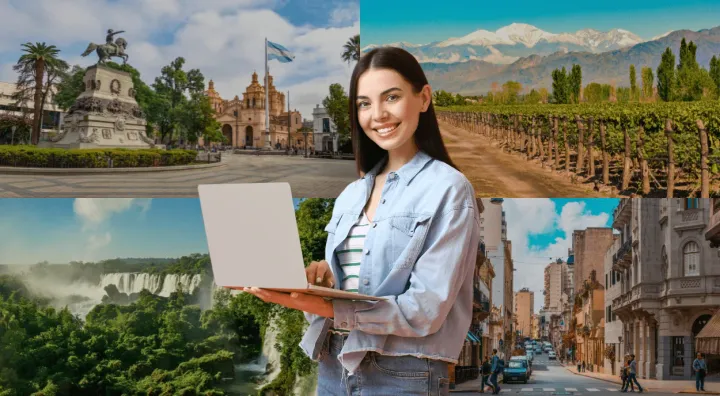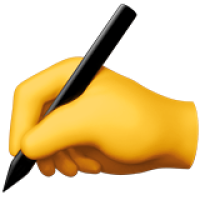What is Medical Tourism?

Medical tourism is the act of traveling (usually abroad) to receive healthcare in another country. As a nearly $30 billion industry that’s projected to 4x by 2032, it’s clear that more and more people are opting to travel for healthcare rather than staying put at home.
Historically, people have used medical tourism as a means to access better care or different medical procedures than are offered at home and while this is definitely still a thing, it’s certainly not the only reason someone might look into healthcare abroad.
These days, medical tourism is used for a ton of different reasons, including:
- Lower costs
- Quicker access to medical services
- Recommendations from friends or family
- Finding a culturally similar provider
- Combining medical care with travel
What are the Benefits of Medical Tourism?
The reality is that healthcare is not the same around the world. From the cost of treatments to the quality of care and breadth of procedures offered, what you can access at home is probably going to be completely different from the options abroad.
Medical tourism opens up your choices when it comes to healthcare as it removes geographical limitations and allows you to find the best possible healthcare for your specific situation.
The cost of healthcare, for instance, is a major hurdle for a lot of people (and it’s only getting bigger). According to the Milliman Medical Index, in fact, the price of healthcare in the US has risen almost 7% in the last year, making it one of the most expensive places in the world for medical care. What costs $100k in the US might cost $10k somewhere else making medical tourism a cost-effective alternative – especially if you’re uninsured.

Even if you live in a country where healthcare is affordable, like in the UK, it doesn’t necessarily mean it will be accessible. According to this statement by the NHS, in the UK, the average wait time between referral and treatment is 14.4 weeks but could be as long as 10 months.
That’s a long time to wait for life-changing care when you could be seen in a matter of days abroad.
The benefits don’t stop there, either. Medical tourism has transformed to not only offer treatments and procedures to a more all-around luxury travel experience. Patients have started combining their care with staying in 5-star hotels, visiting dream destinations, and generally getting pampered for a week or two.
What are the Different Types of Medical Tourism?
There are various types of medical tourism although most people usually only think of one: outbound. This is when someone leaves their home to travel to a foreign country for care and it's the most practiced by many.
But there is also inbound medical tourism, which is when someone who lives abroad returns home for healthcare reasons. This might be familiar to digital nomads who usually prefer to travel home for doctor visits, surgeries, or other procedures to remove any language or cultural barriers.
Medical tourism also doesn’t always mean leaving the country. Domestic tourism is another popular option, particularly in larger countries like the US or Australia. Healthcare procedures and standards can differ from city to city even within one country, and so needing to hop on a plane or train to find the best care isn’t out of the ordinary.
The last common type of medical tourism is known as circumvention tourism and refers to someone traveling in order to get around (or circumvent) laws that prevent them from accessing certain healthcare procedures where they live.
What are the Most Common Procedures People Undergo on Medical Tourism Trips?
Medical tourism can really refer to any type of procedure, however, some are a lot more common than others.
According to this study, 1/4 of all medical tourism procedures are cosmetic. That covers things like plastic surgery, hair transplants, and veneers that can be extremely costly in high-income countries. In fact, dental procedures in general, cosmetic or functional, are a very common reason for medical tourism.
Perhaps surprisingly, a lot of people choose medical tourism for life-changing care like cancer or fertility treatments. One reason for this is that it can be rare to find a specialist in your area and so to find the best possible chance of success, many patients decide to travel for better healthcare options.
Similarly, for organ or tissue transplants, it can be difficult or nearly impossible to find a donor where you live for a surgery that would drastically increase a patient’s quality of life. Other elective surgeries can also be quite common in medical tourism, such as bariatric, which is used for managing obesity and weight loss.

What Countries Have the Most Medical Tourism?
People are traveling all around the world to access different healthcare procedures and options, with a few countries standing out as particularly popular medical tourism destinations.
Malaysia is not only a popular destination for medical tourism, but a pioneer in the industry that has been actively welcoming patients for over a decade with a dedicated Healthcare Travel Council. Their hospitals offer great accommodation options, meals are usually included in your stay, and your partner/travel companion is able to stay with you overnight.
Elsewhere in Asia, Thailand and Singapore are both highly visited for the quality of care and range of medical procedures offered to tourists. Thailand offers lower costs for both healthcare and luxury travel, whereas Singapore is considered to have some of the highest-quality medical facilities and practitioners in the world.
Mexico and Costa Rica are prominent in the North American medical tourism space, particularly for those in the US looking for easy access to affordable care. Just south of the US/Mexico border, there are, in fact, countless high-quality medical clinics designed for convenient and cost-effective medical procedures.
In South America, instead, Brazil is known for its cosmetic surgeries like facelifts and liposuction while Argentina is home to world-renowned hospitals that offer high-quality care at super competitive prices.

Does Insurance Cover Medical Tourism?
Medical tourism is covered by certain health insurance providers, so it’s important to check your provider’s insurance policies ahead of travel to make sure your medical expenses will be covered not only by procedure but specifically within the country where it will be carried out.
If you are an international traveler like us, for instance, you might recognize SafetyWing, as it's a popular provider that offers health coverage for travelers all around the world. Their Nomad Insurance Complete policy includes private and public healthcare in over 180 countries and is particularly suitable for medical tourism as they cover:
- Doctor and specialist visits
- Cancer screenings and treatments
- Wellness therapies like chiropractics, dieticians & acupuncture
- Charges during hospital stays
Although consultations might be covered, treatments that are not medically necessary, like cosmetic procedures, are excluded from the policy. The US, Hong Kong, and Singapore are also exempt, as in these places, coverage is limited to emergencies only unless you buy the optional add-on.
Their plans start at $150.50/month for international travelers aged 18-39 with options for all ages. The policy requires a 12-month commitment but can be canceled within a 15-day window after purchase.
Frequently Asked Questions About Medical Tourism
You might still have some questions about medical tourism, so let's unpack them one by one and address the most common concerns.
Is medical tourism safe?
As with any medical treatment, there will always be risks involved and it's important to choose a healthcare provider that is reputable and trustworthy. It is always best practice to do thorough research and take out insurance before traveling.
Is medical tourism actually legal?
In most cases, medical tourism is completely legal. Of course, laws and regulations will vary depending on where you are from and where your treatments will take place and it’s important to know whether you need a visa to travel.
How does medical tourism impact local communities?
The impact of medical tourism will vary by country, however, opening up healthcare to foreigners can indeed have a positive impact on local communities. This is because medical tourism funds healthcare development in the area, generally improving the overall quality of care for all, boosting the economy, and providing more jobs for local people.
Want More Travel Tips?

Join our global
digital nomad community
Join us for free
Freaking Nomads is supported by you. Clicking through our links may earn us a small affiliate commission, and that's what allows us to keep producing free, helpful content. Learn more





 Travel tips, hacks, and news
Travel tips, hacks, and news Exclusive travel discounts
Exclusive travel discounts Offers and promotions
Offers and promotions Digital nomad inspiration
Digital nomad inspiration Latest articles form our blog
Latest articles form our blog